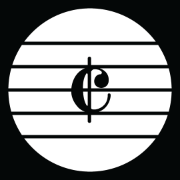Leaderboard
Popular Content
Showing content with the highest reputation on 12/16/2023 in all areas
-
Hello everyone, I was really busy the past few weeks so only now I'm able to show you my new project. Estampas_de_España.pdf https://drive.google.com/drive/folders/1xnciHniD_iW3uBUrxphiy_p4QF9xaSEe?usp=drive_link (The same PDF just in case) Basically, I'm organizing a cultural project where composers from all around the globe put piano music to a selection of paintings. The best pieces will be included in a collaborative set that will be performed in the future (up to 16 pieces for the official collaborative album). The best composition will receive a 500 euros prize, the second best work will receive 200 euros prize, I will offer a few 30 euros rewards to other great pieces (up to 3 extra rewards). I hope many people will participate, see you soon! Don't forget to send me your painting choices so I can organize better (to my email ivanmusic1791@gmail.com). Here you have the drive with the paintings: https://drive.google.com/drive/folders/1rR-lpQH18sTy6qRqH2_QcR7DIMd4Z0Y8?usp=drive_link If you have any doubts contact me over email! But I will be able to reply here for a few days, but I might not check it as often.1 point
-
Hi everyone! I am posting the 1st movement of my Third Piano Sonata in C sharp minor. This movement starts at 2019, but was abandoned since I had to focus on composing my two Clarinet Quintets then. Then after finishing my Sextet movement I wanna write something trash to restore my originality, so I choose this one to work on. What I had is only b. 1-8, b.177-180 and b.225 till the end, so my job was to extend them and make the music as smooth as possible. Luckily the final product isn't quite trash at all, even though the style is less original than the Sextet. I know the recording is bad, especially with those tears, but hopefully it doesn't hurt! Hope you enjoy it! This movement for me is furious, but it acts as self therapy by composing and expressing all my anger and confusion. I was in a state of depression at the composing period, worrying from the world to myself. Luckliy this movement saves me from falling to the depression trap. I make use of the opening falling fourth motive and that triplet rhythmic motive all through the movement, which results in something Beethovanian and reminds me of his Appassionata. I started to enjoying it more and more after playing it myself. It's challenging but very enjoyable to do so. Piano Sonata no.3 in C sharp minor First Movement.pdf Piano Sonata no.3 1st Mov Audio.mp3 Here is the structre of the movement: 0:03 Exposition, First Subject. Uses the falling fourth motives and the triplet rhythmic motives in the whole movement due to coherence (and laziness LoL) 0:39 Transition 1:02 Exposition, Second Subject, in dominant G# minor. 1st theme more chordal, 1:17 2nd theme, more cantabile in nature, 1:35 3rd theme with furious octaves, and the next passage with 16th triplets on top with the fate motive underneath reminds me the Appassionata most. 2:10 Development, begins with imitation and canon, then reach the more beautiful theme in 2:44, but soon crushed and the Appassionata related F minor comes in at 3:29. The progression here I am sure I have learnt from Schubert's Fantasie in F minor for piano four hands. 4:19 Recapitulation, First Subject. Try something Bramsian here. 5:10 Recapitulation, Second Subject, same as the exposition except in the tonic key. 6:19 Coda, using that beautiful theme from the development again (except with that freaking wrong note LoL). Building up climax until reaching 6:51(my favourite passage!), and is agitated till the end. Feel free to criticize it or just take note on something interesting of it. I will be very happy for all your opinions! I know the recording is bad, especially with those tears, but hopefully it doesn't hurt! I recommend the YT video version more since it seems to filter out some of the tears! Update on 26 Jan 2025: Here is the post for the second movement of the Sonata: Update on 2 Jun 2025: Here is the post for the third movement of the Sonata Henry1 point
-
So I not only listened, but I examined it in Reaper as well. There is one point where it slams the limiter a smidge too hard and goes over by .5 db, but it didn't make an audible pop and otherwise, the clipping has been eliminated. It certainly sounds good as is, but there are a couple things you might want consider going forward: • Definitely always make sure to have a limiter on the master to make sure you aren't clipping and it catches any peak that would go too loud. • You have fixed the clipping problem, but you do have a trade off: The audio is now a bit "squashed" in places. As the compressor lowers the peak to prevent it from clipping, in those FF+ sections, the quieter instruments are also now made (relatively) louder and it upsets the dynamics a bit as there is no longer such a volume difference between quiet and loud. In your piece it's only happening a bit, and it's not a glaring issue, but it would be if those super-loud sections went on for a significant period of time. The crappy thing with digital audio is you can't record to it as loudly as you could with analogue, and consumers today are afraid of turning up their volume for some reason. That obviously poses problems in orchestral music, where strong dynamic range is a valued and necessary component of the piece. The squashed audio problem could be eliminated by simply turning the entirety of the mix down a couple db or more, or maybe reducing the intensity of the limiter, but you'd have to turn it up more on your device as a consequence.1 point
-
Hello Henry, This is a well-written sonata! Great job, and I appreciate your efforts in recording this performance. The triplet octaves must be really hard to play at this tempo, but you executed them very well. You must've taken some ideas from Chopin's Scherzo No. 3, which is also written in C-sharp minor and features rapid octave passages. The melodic second theme in bars 42-51 and 177-186 is one of my favourite parts of this movement, as well as the first few measures of the recapitulation at bar 142. For bars 142-149, I like how you creatively doubled the note values and used alternating octaves in the accompaniment, which adds more colour to the music. Other than the parallel fifths in some sections (e.g. bars 3-4 and 138), I have nothing else to say. I am glad to hear that you enjoyed playing this sonata yourself! I can't wait to listen to the second movement. Overall, what a virtuosic performance! Carl Koh Wei Hao1 point
-
This had me grinning like an idiot all throughout 😄 your variations are so clever! The 4th one in particular almost made clap at my screen! Your writing is airtight. Not a single "wasted note", so to speak. And not just airtight, but somehow sincere and convincing, it's downright infectious. Thanks for sharing, this was awesome 👏🏻 👏🏻 👏🏻1 point
-
Regarding this, I personally don't mind conservative harmonies. I know I said this in one of my videos, but good harmony doesn't necessarily mean, who can create the craziest and most unique harmonies in a piece. I think that crazy harmonies may actually ruin this piece, just given its style. One of my complaints around composers who try to get too creative with their harmonies, is that the overall piece sometimes starts to lose its meaning. In my opinion, use harmony where applicable. In a piece like this, the tamer harmonies are ok in my eyes, simply because the rest of the piece has other elements to give it color. One instance of this is the polyrhythmic section which is one of the most beautiful sections of this sonata. Perhaps the phrase may contain basic harmonies, but the clean harmonic structure makes the phrase easy to follow. And don't forget the melody. Melody is probably one of the hardest aspects of composition, and I do think Henry excelled in that area. Interesting, because I recently listened to nearly all of Beethoven's sonatas, and I find that most of them are not really lyrical. Some exceptions would be Moonlight Sonata, and perhaps Pathetique. But Henry's sonata is perhaps neo-romantic. I found myself enjoying this 1st movement sonata more than a lot of Beethoven's 1st movements. I'll have to give Schubert a listen one of these days.1 point
-
@Thatguy v2.0 i listened and i really like the octatonic vibe and driving nature of the piece, as well as the brief but mystical middle section. it’s one of the better piano works by current composers i’ve listened to for sure.1 point
-
For me I really would bridge the b.129 one to make it a climax. Also in the middle section I will make it a curve with excitement in the middle to late portion of it, rather than serene and quiet all the time. Having some brightness and triumph portrayed there and have it defeated later seems to me more tragic, which is what Tchaikovsky did in the 3rd and 4th movement of his Pathetique, or what Brahms did in his 3rd and 4th movement of his Fourth Symphony. The end of it to the modulation of C minor can be dramatic and loud, or disappointed for a quiet sneak back to C minor. Henry1 point
-
Not the sort of the thing I usually listen to at all, so I don't have any detailed comments, but it was an interesting listen and I liked it! I think it has a good sort of frantic energy.1 point
-
This one is for sure the hardest among the whole set. A Waldsteinian accompaniment, energy and tempo, moments of syncopation like in no.7 and 9, use of hook accompaniment as in no.9, heavy chords as in no.8, imitations, lento section reminds me of no.1 and raindrop prelude, and the longest one with page number matching the prelude number, all these make it the most difficult one of the set. Stlll I enjoy playing this very much. This one as @SergeOfArniVillage said looks like the real finale of the prelude set with the elements in previous preludes reappear (and being the longest), while no.11 is an introduction to the postlude no.12. Thx for giving me a chance to play your preludes, I really learn through each of them by playing them since I won't be able to compose any of these preludes and you teach me new things with them. Henry1 point
-
Hello everyone, This is my first post here and I wanted to share a piece I recently wrote with you all. Let me know your thoughts! The five poems within my composition Poetry collectively narrate a heartbreakingly beautiful, vastly complex, and motivically interwoven tale. The suite opens with the Prelude (0:02), a fantasy-like prophecy of the other poems in the suite; the bells of reality can be heard in the distance. Dreamy visions pass transiently through the background noise, and as the piece progresses, the bells increase in intensity to prevent the visions from fully materializing. The bells soon find themselves trapped in a climactic whirlwind as they start to transcend time and space, like accelerating into a wormhole, falling faster and faster and faster... In the Lament (4:34), one finds oneself in a completely new world - one that is bare and empty. The offbeat rhythms insinuate a notion of regret, and the unresolved pedal point during the climax leaves the listener yearning for closure, although there is none to find. This poem ends with a painful lullaby-like restatement of the opening theme, as if crying oneself to sleep. During the night, the Nocturne (8:12) slowly brings the once-barren world to life. After a plainly stated opening theme, the progressive harmonies start to bring wonder and color to the world, while the stars twinkle in the distance. As the sun rises, its rays illuminate the colors of the landscape, which mix to create a brilliant backdrop of green mountains, purple flowers, and a golden sky. The Scherzo (12:07) is an idyllic depiction of the utopia the world has now become. There is joy to find in life! Jokes to laugh at! Authentic cadences, for the first time! The tender, warm feeling of being loved! Moments of pure brilliance and ecstasy! Excitement! What is there not to live for? It's everything one could ever want in... Postlude (18:46): a snap back to the bells of reality.1 point





